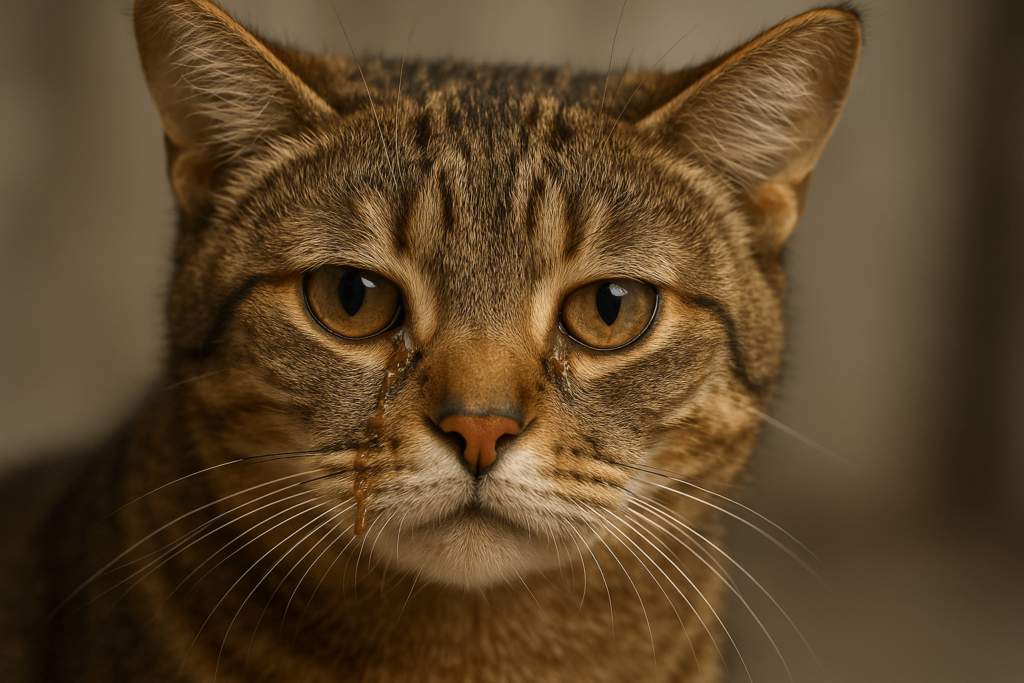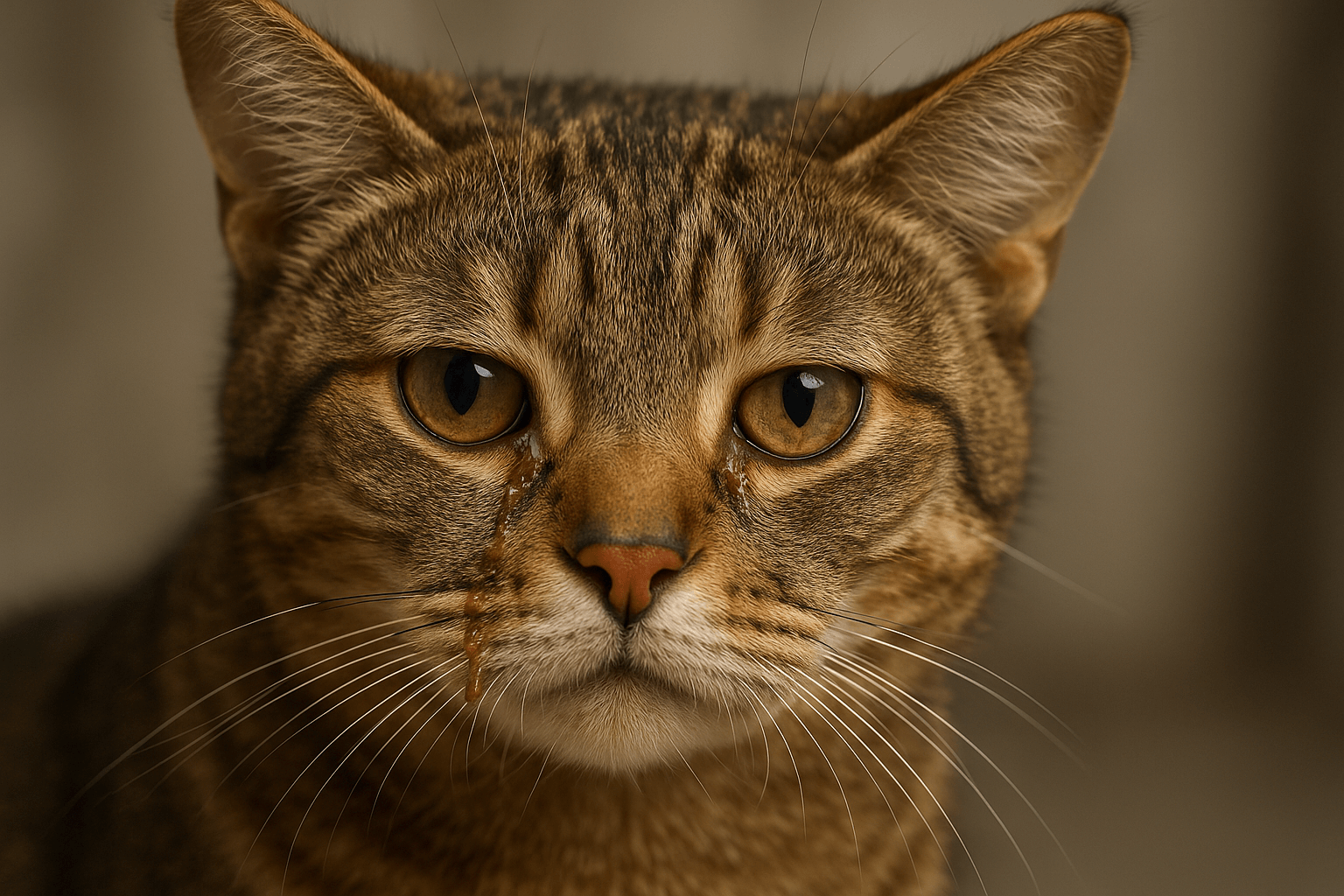Cat Tear Duct Discharge: What You Need to Know
Cats are known for their expressive eyes, but what happens when you notice unusual discharge around their tear ducts? While occasional tearing is normal, persistent or excessive discharge can indicate underlying issues that require attention. Understanding the causes, symptoms, and solutions for cat tear duct discharge is essential for maintaining your feline friend’s eye health. In this blog post, we’ll explore everything you need to know about this common concern, from identifying potential problems to providing effective care. Let’s dive in and ensure your cat’s eyes remain bright and healthy.
Common Causes of Cat Tear Duct Discharge
Tear duct discharge in cats can stem from a variety of causes, ranging from minor irritations to more serious health conditions. Identifying the root cause is the first step toward addressing the issue effectively.
Blocked Tear Ducts:
A blockage in the tear ducts prevents proper drainage, leading to overflow and visible discharge around the eyes.Eye Infections:
Bacterial or viral infections can cause increased tear production and discharge, often accompanied by redness or swelling.Allergies:
Cats can develop allergies to dust, pollen, or food, triggering watery eyes and discharge as part of an immune response.Foreign Objects:
Debris like dirt or hair trapped near the eye can irritate the tear ducts, resulting in abnormal discharge.Congenital Issues:
Some cats are born with narrow or underdeveloped tear ducts, making them prone to chronic discharge problems.
By recognizing these common causes, you can better understand the potential triggers behind your cat’s tear duct discharge and seek appropriate treatment.

Signs That Your Cat May Have a Tear Duct Issue
While some discharge is normal, certain symptoms may indicate a more serious problem requiring veterinary attention. Keep an eye out for these warning signs.
Excessive Tearing (Epiphora):
If your cat’s eyes consistently water or leave damp spots on their fur, it could signal a tear duct issue.Yellow or Green Discharge:
Colored discharge often points to infection or inflammation and should not be ignored.Red or Swollen Eyes:
Inflammation around the eyes or eyelids suggests irritation or infection affecting the tear ducts.Frequent Eye Rubbing:
Cats rubbing their eyes against furniture or their paws may be trying to relieve discomfort caused by blocked or irritated tear ducts.Crusty Buildup Around the Eyes:
Dried discharge forming crusts on the fur near the eyes indicates ongoing tear duct problems.
Noticing these signs early allows you to address potential issues before they escalate into more severe complications.
Check this guide 👉Blocked Tear Duct in Cats: Best 7 Health Tips!
Check this guide 👉Cat Sneezing No Discharge: Best 7 Health Tips!
Check this guide 👉Cat Eye Diseases: Best 7 Expert Tips!
Preventive Measures for Healthy Tear Ducts | When to See a Veterinarian |
|---|---|
Regularly clean your cat’s eyes with a damp cloth | Persistent yellow or green discharge |
Keep your cat’s face free of debris and dirt | Signs of pain or discomfort around the eyes |
Provide a balanced diet rich in omega-3 fatty acids | Swelling or redness that doesn’t improve |
Avoid exposing your cat to smoke or strong chemicals | Excessive tearing lasting more than a few days |
Schedule routine vet check-ups for eye health | Crusty buildup or frequent eye rubbing |
How to Clean Your Cat’s Eyes Safely
Regular cleaning can help manage mild tear duct discharge and prevent further irritation. Follow these steps to ensure safe and effective care.
Gather Supplies:
Use sterile saline solution, cotton balls, or a soft, damp cloth specifically designated for your cat’s eye care.Approach Calmly:
Handle your cat gently to avoid stress. Speak soothingly and reward them with treats afterward to create a positive association.Wipe Away Discharge:
Gently wipe away any dried or wet discharge from the corners of the eyes, working outward to avoid spreading bacteria.Avoid Harsh Products:
Never use human eye drops or cleaning agents, as these can irritate your cat’s sensitive eyes. Stick to vet-recommended solutions.Monitor for Improvement:
After cleaning, observe whether the discharge decreases over time. If it worsens, consult your veterinarian promptly.
With careful handling and consistent care, you can keep your cat’s eyes clean and comfortable while monitoring their overall eye health.
Treatment Options for Cat Tear Duct Issues
Depending on the severity and cause of your cat’s tear duct discharge, various treatment options may be recommended by your veterinarian.
Antibiotics for Infections:
If an infection is present, oral or topical antibiotics may be prescribed to eliminate harmful bacteria.Flushing Blocked Tear Ducts:
A veterinarian can perform a procedure to flush out blocked tear ducts, restoring proper drainage.Anti-Inflammatory Medications:
For cases involving inflammation, anti-inflammatory drugs may reduce swelling and alleviate discomfort.Dietary Supplements:
Omega-3 fatty acids can support eye health and reduce inflammation, potentially improving tear duct function.Surgical Intervention (Rare Cases):
In extreme cases of congenital defects or severe blockages, surgery may be necessary to correct the issue permanently.
Understanding these treatment options empowers you to work with your vet in finding the best solution for your cat’s specific needs.
Preventing Tear Stains Around Your Cat’s Eyes
Tear stains are a cosmetic concern often associated with tear duct discharge. While they’re not harmful, many owners prefer to minimize their appearance for aesthetic reasons. Here’s how to prevent and manage tear stains effectively.
Keep the Area Dry:
Wipe away moisture regularly to prevent discoloration of the fur around your cat’s eyes.Use Stainless Steel Bowls:
Plastic bowls can harbor bacteria that contribute to staining. Switching to stainless steel reduces this risk.Check for Food Sensitivities:
Certain ingredients in your cat’s food may exacerbate tear production. Experiment with hypoallergenic diets under veterinary guidance.Trim Fur Around the Eyes:
Keeping the fur trimmed short reduces the surface area where tears can accumulate and stain.Consult Your Vet About Supplements:
Products containing natural enzymes or probiotics may help reduce tear staining over time.
By adopting these practices, you can minimize unsightly tear stains while promoting overall eye hygiene.
Recognizing Normal vs. Abnormal Eye Behavior
Distinguishing between typical feline behavior and signs of trouble is key to maintaining eye health. These insights will help you determine when intervention is necessary.
Occasional Blinking or Squinting:
This is usually harmless unless accompanied by other symptoms like redness or discharge.Mild Tearing After Sleep:
It’s normal for cats to have slightly watery eyes upon waking; this resolves quickly without issue.Clear vs. Cloudy Eyes:
Clear eyes indicate good health, whereas cloudiness may signal an injury or illness.Changes in Eye Color:
Sudden changes in iris color warrant immediate veterinary attention, as they could indicate serious conditions.Behavioral Cues:
Cats avoiding light, pawing at their eyes, or hiding more than usual may be experiencing discomfort or pain.
Understanding these distinctions ensures timely action when abnormalities arise.
Home Remedies for Mild Tear Duct Issues
For minor cases of tear duct discharge, home remedies can provide temporary relief. However, always consult your vet before trying new treatments.
Warm Compresses:
Apply a warm, damp cloth to the affected eye to loosen dried discharge and soothe irritation.Saline Solution Rinse:
Use sterile saline to gently rinse the eye, removing debris and flushing out minor irritants.Coconut Oil (External Use Only):
Applying a small amount of coconut oil around the eye can soften tear stains without irritating the skin.Herbal Teabags:
Chamomile teabags steeped in warm water and cooled can act as a mild compress to reduce redness and swelling.Increase Hydration:
Ensuring your cat drinks enough water supports overall health, including tear production and quality.
These remedies offer gentle ways to manage mild issues, but remember that professional care is crucial for persistent or worsening symptoms.
Frequently Asked Questions About Cat Tear Duct Discharge
Is tear duct discharge normal in cats?
Occasional tearing is normal, but persistent or colored discharge may indicate an underlying issue.
Can I use human eye drops for my cat?
No, human eye drops can harm your cat’s eyes. Always consult your vet before using any medication.
What causes tear stains in cats?
Tear stains occur when tears overflow onto the fur due to blocked ducts or excessive tearing.
How often should I clean my cat’s eyes?
Clean your cat’s eyes as needed, typically once or twice a week, unless advised otherwise by your vet.
Will my cat’s tear duct issue resolve on its own?
Mild cases may improve with cleaning, but persistent problems require veterinary evaluation and treatment.
Prioritizing Your Cat’s Eye Health
Tear duct discharge in cats is a common concern, but with proper care and attention, most issues can be managed successfully. By staying vigilant for symptoms, practicing regular cleaning, and seeking professional advice when needed, you can ensure your cat’s eyes remain healthy and vibrant. Remember, your feline friend relies on you to advocate for their well-being—so don’t hesitate to reach out to your veterinarian if something seems amiss. With love, patience, and proactive care, you can keep those beautiful eyes shining bright for years to come.
Is Royal Canin Good Cat Food? A Deep Dive into Tailored Feline Nutrition Choosing the right food for your feline friend is …
Dwarf Cat Lifespan: Best 7 Expert Tips! Discover how to ensure a long, healthy, and happy life for your short-legged feline companion.
Blue Buffalo Cat Food: Best 7 Expert Tips! Discover how to choose the right formula, feeding strategies, and nutritional benefits for your feline friend.
Canned Pumpkin for Cat Diarrhea: Best 7 Expert Tips! Natural remedy to firm stools, soothe upset bellies, and support gut health safely.




